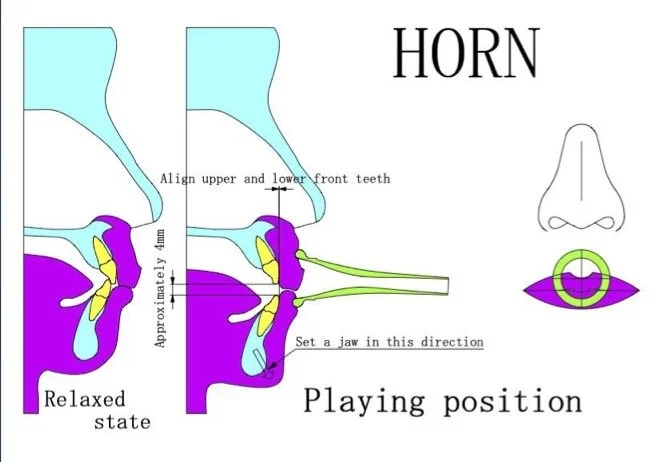Essential Question: What is a horn?
The French horn, often simply called the "horn," is a brass instrument recognized for its rich, warm tone and wide range. Its distinctive sound makes it an integral part of orchestras, bands, chamber ensembles, and solo performances. The French horn's design combines elegance with complexity, allowing for a remarkable expressive range.
Physical Features:
Mouthpiece:
A small, funnel-shaped mouthpiece where the player buzzes their lips to create sound.
Mouthpieces come in various sizes, affecting tone and playability.
Leadpipe:
The tube connecting the mouthpiece to the main tubing of the horn.
Often slightly conical, contributing to the horn's unique sound.
Valves:
Typically four rotary valves, though some horns have three.
The valves direct air through different lengths of tubing, altering the pitch.
Tubing:
The horn’s tubing is coiled into a circular shape and measures about 12-13 feet (for a single horn) or up to 17 feet for a double horn when fully extended.
Bell:
The large, flared opening that projects sound.
Players often insert their right hand into the bell, which helps with tone control, tuning, and muting.
Slides:
Tuning slides adjust the pitch of individual notes or the overall instrument.
Found for each valve and the main tuning loop.
Thumb Trigger:
Found on double horns, it switches between the F and Bb sides of the horn, providing access to different ranges and timbres.
Range:
The horn has an extensive range, typically from the F below the bass clef staff (or lower for advanced players) to the C above the top of the treble clef.
Its range and versatility allow it to blend seamlessly with other instruments or stand out as a soloist.
Sound Production:
Sound is created when the player buzzes their lips into the mouthpiece, creating vibrations that travel through the tubing.
The combination of embouchure, valve use, and hand positioning in the bell shapes the pitch and tone.
Types of Horns:
Single Horn:
In F or Bb, lighter and simpler but with limited range.
Often used by beginners.
Double Horn:
The most common professional model, combining F and Bb tubing for greater range and flexibility.
Played using a thumb trigger to switch between the two sides.
Triple Horn:
Combines F, Bb, and a high F or Eb side.
Provides even greater versatility, particularly in high registers.
Natural Horn:
Lacks valves, relying on hand-stopping and lip control to change pitch.
Used in historical and period performances.
Historical Context:
The horn's origins trace back to hunting horns used in Europe during the Middle Ages.
By the 17th century, the horn entered the orchestra, evolving into a more versatile instrument.
The addition of valves in the early 19th century significantly expanded its range and chromatic capabilities.
Horn Mouthpiece Position
Typical horn mouthpiece placement is 2/3rd on the top lip and 1/3rd on the bottom lip.
Push the jaw slightly forward so the teeth are lined up on top of each other
Open the teeth lightly
Form a “brass face” to create the embouchure with a small opening in the center of the lips (aperture)
Blow air through the aperture to start the buzz
Right Hand Position
Thumb should be tucked firmly against the index finger, slightly cupping the hand.
Insert the hand into the bell against the far side of the bell. It needs to go in far enough to extend the bell throat, but not so far that it muffles the sound.
Compromised positions can be allowed to accommodate the small stature of a young student, but should be adjusted to the correct position as soon as feasible. Examples of these compromised positions can include the hand resting on the inside of the bell if holding the bell up or resting on the bottom of the bell, palm curved up if sitting).



